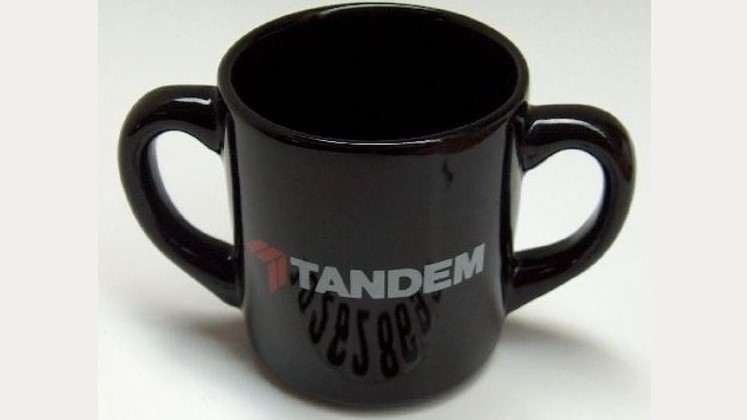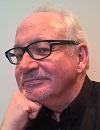Preamble
The Australian Computer Society (ACS) was formed 50 years ago, when the various state computer societies joined forces.
To mark the occasion, the ACS has produced a heritage project to honour the many individuals who have contributed to the growth of the ICT profession in Australia.
At the heart of the project is a history of computing in Australia. It is not just a history of the ACS, but the history of a profession.
Australia has the longest computing history of any country, excepting the US and the UK, and CSIRAC in the Museum of Victoria is the oldest computer still in existence.
Chapter 40: The rise of the superminis
Following the first round of minicomputer suppliers in the 1970s, a new breed of hardware vendor entered the market in the 1980s and 1990s.
These high‑performance computers were often called ‘superminis’. Many of these machines offered better performance than older-style mainframes, and were usually sold at a premium.
Sun Microsystems
Sun Microsystems was a comparatively late entry into the minicomputer market, founded in 1982 in Santa Clara, in California’s Silicon Valley. It grew very quickly and was a major player in the Australian market in the late 1980s and 1990s.
Sun Microsystems began as a workstation vendor. Workstations, conceived as powerful single-user machines, were eventually superseded by powerful microcomputers. Most workstation vendors (such as Apollo) disappeared, but Sun grew into a significant hardware vendor by concentrating on open systems – in particular, the Unix operating system.
‘SUN’ stood for Stanford University Network, named after the famous Silicon Valley university where it was conceived. One of the founders, Scott McNealy, remained its CEO until 2002.
The company’s computers were initially distributed in Australia by Lionel Singer (see Chapter 38), but it set up a local subsidiary in 1986 under Val Mickan, who had previously run ICL Australia. Subsequent managing directors were Shaun McConnon (1990), Les Hayman (1992) and Russell Bate (1994).
In the 1990s, Sun Microsystems in Australia grew as many other minicomputer suppliers declined. It strongly emphasised its support for the Internet; McNealy pioneered the phrase “the network is the computer.”
Many of its sales were to companies riding the Internet boom. Duncan Bennet became Managing Director in 1999, at the height of the company’s success. He held that position for ten years, only to see the company decline.
Sun Microsystems was hit hard by the tech crash of the 2000s. The fact that it had tied its fortunes so closely to the Internet was ultimately the cause of its demise. Its revenues and share price plummeted.
It made many vain attempts to strike out in a new direction, even acquiring former storage leader StorageTek in 2005. Sun Microsystems was eventually acquired by software company Oracle in 2009, mostly for its software assets including Java and MySQL.
Tandem
Tandem Computers was founded in Silicon Valley in 1974, by James ‘Jimmy’ Treybig. Most of its employees came from Hewlett-Packard, where Treybig had been a marketing manager. Its machines were based around a fault-tolerant architecture, which ensured high reliability.
The company was successful, and its ‘NonStop’ computers were popular in online transaction processing (OLTP) environments. But like many other minicomputer suppliers in the 1990s, it had trouble competing against commoditised machines, and was acquired by Compaq in 1997.
Tandem computers were originally distributed in Australia by an already well-established Melbourne company, Harry Foster’s MIS (Management Information Systems), which had the ANZ Banking Group as its largest customer. Tandem bought out MIS in 1984 and set up an Australian subsidiary under Graham Bennett. It was based in Melbourne and was initially staffed by people who had come across from MIS.
Under its second Managing Director, Ray Whiteside, Tandem opened a Sydney office and became a major supplier to Australian banks and financial institutions. Its fortunes in Australia followed those of its parent company and it folded into Compaq in 1997.
Convex
Convex was formed in 1982 in Richardson, Texas, and released its first machine in 1985. It used similar architecture to Cray supercomputers, but used off-the-shelf components to minimise the cost. Sigma Data (see Chapter 36) distributed Convex’s products in Australia without a great deal of success, before the company set up its own operation in Australia in 1992. Hewlett-Packard acquired Convex in 1995.
Pyramid
Pyramid, like many other companies of the era, initially distributed its products in Australia via the Lionel Singer Corporation. It eventually set up its own local operation in 1989, under the leadership of former senior employee Gary Jackson. Pyramid was very successful in Australia, and at one stage brought in 10% of its global revenues from the local operation.
The extroverted Jackson became one of the highest-profile figures in the Australian computer industry, later running the local operations of Microsoft, then Cisco. (His tenure at Microsoft was cut short after an unfortunate misunderstanding over a golf sponsorship.)
Pyramid was particularly strong in supporting Unix, and was a popular platform for the emerging relational database management systems of that era. Telecom was a very large customer. The company was acquired by German company Siemens in 1995.
Sequent
Sequent Computer Systems began life as Sequel in 1983, founded by a group of ex-Intel employees who wanted to build a symmetric multiprocessing (SMP) computer based on technology from a project that Intel had cancelled. The SMP computer architecture involves multiple processers connected to a single, shared memory, which enables increased throughput.
Sequent was based in Portland, Oregon. It used off-the-shelf Intel chips to build Unix-based superminis that were initially very successful. Sequent’s products were first distributed in Australia by Sigma Data, although it set up its own local subsidiary in 1990.
The local company did well at first but declined through the 1990s, lacking the critical mass to keep up with machines from the likes of Sun Microsystems and Hewlett-Packard. Sequent was acquired by IBM in 1999.
NCR
Mainframe supplier NCR (see Chapter 26) had some success as a minicomputer supplier with its Tower series, launched in 1982. The Tower series used the Unix operating system, which became very popular during the 1980s. NCR sold more than 100,000 units worldwide.
NCR also made the 5000 series minicomputers, which used the powerful Motorola 68000 chip. But like the other companies with roots in the mainframe industry, NCR never really adapted to the new world of minicomputers – or the even newer world of microcomputers – and faded as a supplier in the 1990s.
Nixdorf
Nixdorf was a German computer supplier that did very well in Australia in the 1970s and 1980s. It was founded by Heinz Nixdorf in Paderborn, Germany in 1952 using seed funding from an electrical utilities company, and originally produced calculators. It moved into computers in 1968, and opened an Australian office shortly afterwards to sell its 820 machines.
Nixdorf’s most successful machine in Australia was its 8870 mini-computer, released in 1976. It also manufactured and sold point-of-sale terminals, automatic teller machines (ATMs) and digital telephone equipment. Telecom became a major customer, and under Managing Director Dieter Moench, a dynamic German, Nixdorf became a major supplier to the Australian retail market.
In the first half of the 1980s, Nixdorf marketed a small IBM-compatible mainframe, the 8890, which competed against the very low end of IBM’s 4300 series. It was much cheaper than IBM’s machines, and at one stage Nixdorf sold a dozen 8890s to Australia’s Department of Finance. The division was managed by the effervescent Richard Buckle, who later went to Tandem (see above).
The company declined quickly after Heinz Nixdorf died in 1986. It was taken over by Siemens in 1990 and renamed Siemens Nixdorf Informationssysteme (SNI).
Veteran ICT journalist Graeme Philipson has written ‘A Vision Splendid: The History of Computing in Australia’.
It is available as a PDF download here.
Previously published:
Chapter 38: Prime and the Lionel Singer story
Chapter 37: HP and IBM rule the 80s
Chapter 36: Data General and Sigma Data
Chapter 35: DEC leads the minicomputer boom
Chapter 34: David Hartley, Bill Gates and the one that got away
Chapter 33: Australia’s software entrepreneurs
Chapter 32: Multinational software companies move in
Chapter 31: Birth of Australian software and services industry
Chapter 30: The rise and decline of the PCMs
Chapter 29: ‘Plug compatible manufacturers’ take on IBM
Chapter 28: The rise of Fujitsu
Chapter 26: The rest of the BUNCH
Chapter 25: Honeywell in Australia
Chapter 23: ACS at home and abroad
Chapter 22: The early years of the Australian Computer Society
Chapter 21: Other Australian universities
Chapter 20: University of Melbourne and Monash
Chapter 19: Sydney University and UNSW lead the way
Chapter 18: Computing in the Australian Government
Chapter 17: Trevor Pearcey and the birth of CSIRONET
Chapter 16: Enter the minicomputer – DEC comes to Australia
Chapter 15: The IBM S/360 in Australia
Chapter 14: IBM redefines the computer industry
Chapter 13: Control Data Australia (part II)
Chapter 12: Control Data Australia (part I)
Chapter 11: The Australian Computer Society
Chapter 10: Five Computer Societies
Chapter 9: Australian made, Australian designed
Chapter 8: Australia's Computer Industry in 1962
Chapter 5: SILLIAC and the Snowy Mountains Scheme
Chapter 3: Harry Messel and the birth of SILLIAC








.jpg.transform/320x180/img.jpg)

